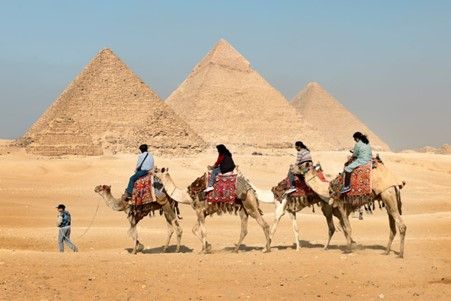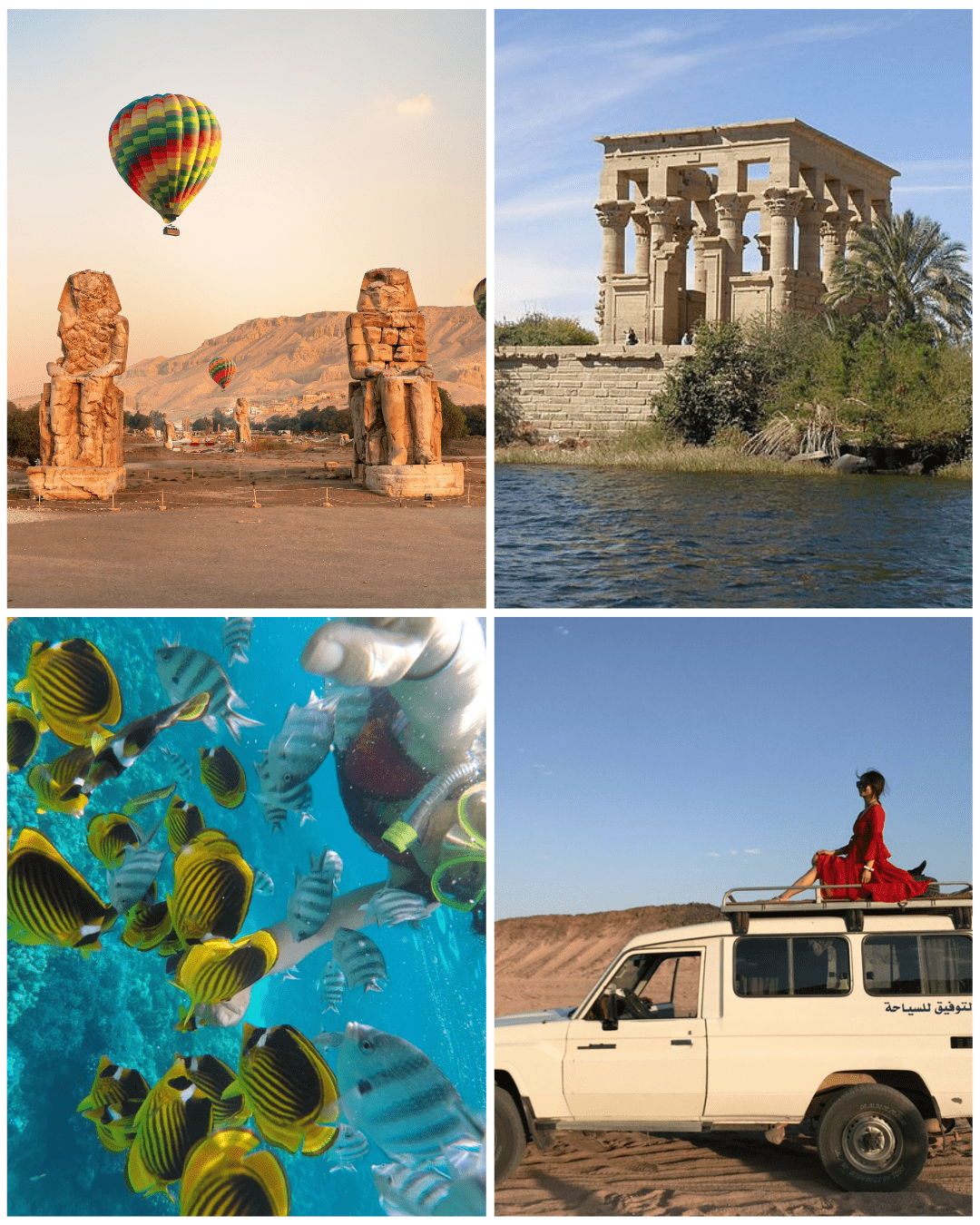10 Interesting Facts You Didn’t Know About Ancient Egypt
One of the most powerful and influential civilizations, Ancient Egypt was the land of the Pharaohs. With their magnificent pyramids, beautiful art, and incredible inventions, Ancient Egypt was responsible for some of history’s greatest creations.
Archeologists have long been entranced with the history of Ancient Egypt that a whole new field of study was developed: Egyptology. So much so was the attraction towards this field, that excavations and research led to the making of movies and a series of documentaries to capture the essence of this magical civilization.
But the question is: How much do we really know about Ancient Egypt? So before you make that 10 day Egypt itinerary, here are some surprising, and interesting facts that you may not know about this majestic civilization.
1. Egyptian Pyramids Were Not Built By Slaves
Many modern film producers believed the classical historian Herodotus, according to him about 100,000 slaves, including men, women, and children built the Great pyramids. He produced an image that these slaves worked hard in the worst conditions and were often abused and tortured if they didn’t work fast enough.
This, however, the theory was proven wrong according to archeological evidence found. Approximately 5,000 workers were permanent and, paid whereas 20,000 worked as temporary workers who were free men chosen under the corvée system of national service. They worked in three or four months shifts and were given food, shelter and medical supplies as a form of payment.
2. Animals Were Seen As Incarnations of the Gods
Ancient Egyptians were very fond of cats and loved having them as pets. They worshiped cats and had statues and paintings created to signify their devotion. They are the first civilization to have domesticated cats and would often preserve and mummify them to be buried with their owners. Such was their love for cats that killing any one of them was punishable by death.
Other animals that ancient Egyptians had a reverence for were hawks, dogs, ibises, lions and baboons.
3. Egyptians Wore Makeup
In ancient times, both men and women used makeup in large quantities believing it gave them protection. Kohl was the main substance used which was made from grinding ores such as malachite and galena mixed with soot and oil. They used them liberally around their eyes which can be seen depicted in their art.
They also used red paint and henna to color their lips, hands and fingernails. Both sexes wore perfumes made from various fragrances such as Susinum, the main ingredients of those perfumes are lily, myrrh and cinnamon or Syprinum, which was made of henna, cardamom, cinnamon, myrrh and southernwood.
4. Egyptian Women had Equal Rights
Typically, Egyptian women enjoyed taking care of their home and children but they also had the freedom to work outside. They had the right to buy and sell property, sit on juries, and also enter into legal contracts. Those women who chose to work outside were given equal payment as men. They had so much freedom that many Egyptian women such as Nefertiti, Hatshepsut, Cleopatra are among others who ascended the throne.
Egyptian women also had the right to divorce, remarry and create a prenuptial agreement. The agreement would list all the property and wealth she brought into the marriage and will guarantee full compensation in the event of a divorce.
5. Canopic Jars to preserve internal organs
Canopic jars were four types of vessels used to store and preserve the deceased’s internal organs, except for the heart, during the mummification process. These were later buried with them. Each jar contained different essential organs: lungs, stomach, liver and intestines. The heart was believed to be the home of one's soul, so it remained in their chests.
6. Cleopatra was of Greek origin
From 51 to 30 BC, Queen Cleopatra VII was the last active monarch of Egypt's Ptolemaic Kingdom. Though she was born in Alexandria, she was also a part of the long line of Greek Macedonians that descended from Ptolemy I, one of the most trusted lieutenants of Alexander the Great. She was also the only Ptolemaic monarch who spoke and understood Egyptian.
7. Bread and Beer used as currency
The workers who built the pyramids and tombs and the soldiers were all paid with bread and beer in return for their services. It was also a transaction used in businesses and as offerings to Gods and their dead ancestors.
8. Invented the Pregnancy test
The first pregnancy tests were recorded in the Ancient era of Egypt. Women used barley and wheat seeds to determine their pregnancy and also the gender of the baby. They would urinate on the seeds and if they sprouted, it would mean she is pregnant. If the seeds sprouted was barley, it would be a baby girl and if it sprouted wheat, it would be a baby boy.
9. Egyptian Blue was founded in Ancient Egypt
Egyptian Blue is the world’s oldest synthetic pigment founded by the Ancient Egyptians. They used this color to associate it with the sky and the Nile river. The mineral that gives the blue color is called lapis lazuli, and it is a rare and expensive naturally produced stone. Today, these are used as security inks or for biomedical.
10. Egyptian Doctors had specialized fields
This early form of medical specialization was noted in 450 B.C. by the classical historian Herodotus. When discussing Egyptian medicine, it was said that each physician can only heal one part of the body: some the teeth, some specialize on heart, others on intestines and so on.
Key Takeaways
Ancient Egyptians were known for their rich gender-equality culture and traditions, detailed architecture, and creative innovations. They loved animals and kept some as pets, but cats were the ones who held a higher place in their hearts. And though women were publicly and socially seen to be inferior to men, they had the freedom and rights in terms of property, wealth and entering legal contracts.
The tombs, pyramids, hieroglyphics all hold stories of an era that we can now use to understand the past. There are a lot more discoveries to be made about Ancient Egypt and the more we dig in, the more surprising facts of that era will spring out.












